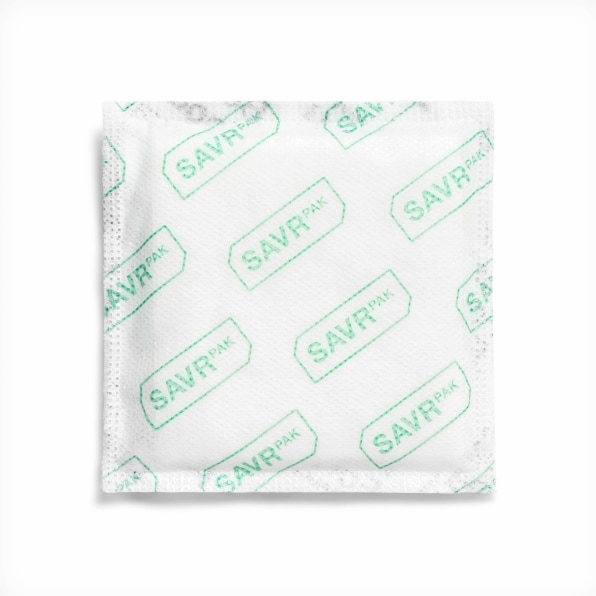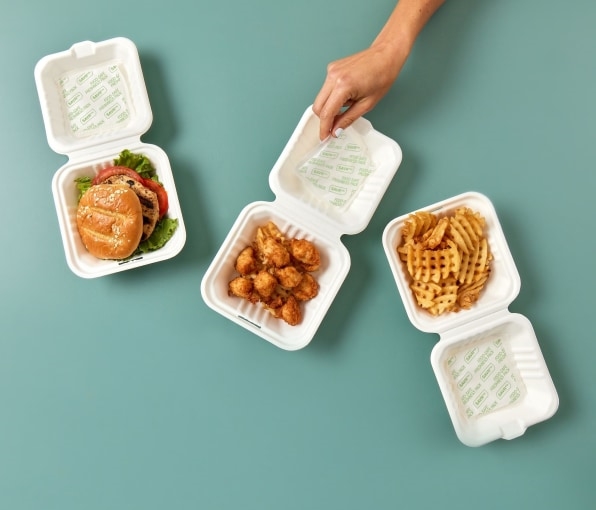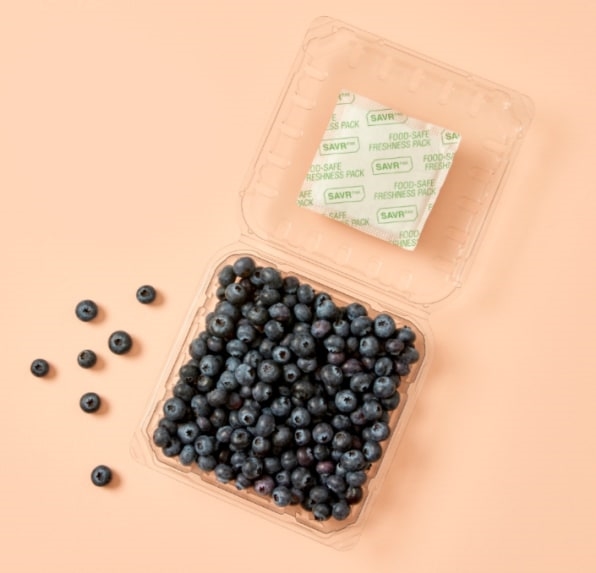A rocket scientist designed a solution for your moldy strawberries
More than a third of the food produced in the U.S. goes uneaten—and berries and salad greens are among the most likely to end up in the trash, since both tend to go bad quickly. (ReFED, a food waste nonprofit, estimates that 20% of the strawberries grown in a year are wasted.)
But a California-based startup called SAVRpak is pioneering a new solution: a thermodynamic sticker that goes inside a package and captures condensation, so strawberries or spinach can last longer.
Bill Birgen, an aerospace engineer who previously invented technology to control the environment inside jets and spacecraft, designed the patch for his own use more than a decade ago after his salads kept wilting.
“He was looking at his lunch, and he’s like, ‘My lunch is so sad—I need to do something about this,’” says Grant Stafford, co-CEO of SAVRpak, who later partnered with Birgen to help bring the product to scale. “He sat down and he built a few prototypes.”

The product fights condensation, which makes food decay when it builds up. The peel-and-stick patch, made from paper and plant-based pulp, is designed to stay cool.
“Our patches are colder than ambient, and therefore they attract moisture,” Stafford says. He compares it to what happens with a cold glass of water outside on a hot day, as water vapor in the air collects as condensation on the glass.
As produce moves through the supply chain, the patch kicks in whenever the package is temporarily unrefrigerated. By keeping condensation off of food inside a package, Stafford explains, “we’re able to minimize microbial growth and keep the food from decaying.”
The startup began working with restaurants early in the pandemic, using a frozen version of the patch that holds a small pocket of ice to keep hot foods fresh—french fries won’t get soggy before they reach the customer, for example. The product is now used by hundreds of restaurants.
The SAVRpak team is preparing to roll out a version of its patch for delicate produce like strawberries that will start showing up in packaging later this year.

In tests with produce growers, the patches helped extend the shelf life of blackberries, raspberries, and strawberries by at least four or five days. Golden berries, a South American fruit, lasted at least 10 days longer than usual. Persian cucumbers lasted as long as 28 days.

A lab test at the University of California, Davis, found that romaine lettuce packaged with the patch had less decay and wilting, and significantly less condensation inside the bag.
RCG Fruits, a supplier in Mexico that tested the product, says that it can take a week for its berries to travel to supermarkets in Canada. Normally, the berries stay fresh for 10 to 14 days, but in tests at its facility using SAVRpak, the company saw that its berries could last as much as 7 days longer.
“It helps us avoid rejection” from retailers, says Fernando Garibay from RCG Fruits. (SAVRpak connected Fast Company with RCG.)
The product costs pennies, the company says, so suppliers could afford to use it in lower-income countries where refrigeration might be less common.
“In Colombia, we work with people who may not have adequate refrigeration, and we’re working with them when they’re transporting their produce in unrefrigerated trucks,” Stafford says. “We’re able to keep their food quality better.”
Other companies are working on different ways to help produce last longer. Small sensors can travel with strawberries to track temperature and humidity along the supply chain from packing houses to trucks to storage and distribution centers; the way the food is handled along the way can make a significant difference in how long it lasts at a grocery store or in someone’s home.
Apeel makes a plant-based coating for produce that slows down decay, and a hyperspectral imaging tool that can determine how ripe fruit is and how soon it should be eaten. Hazel, another startup, makes a sachet that inhibits ethylene, something that fruits naturally emit that triggers the aging process.
If less fruit is wasted, it makes a difference for the environment—it’s not just a matter of keeping food out of landfills, but avoiding the extra energy, water, and other resources used to produce it. Food waste is responsible for roughly 8% of global emissions, or around three times more than the airline industry.
SAVRpak still has another challenge to solve: the waste from its own patch. Right now, the stickers have to be thrown away, though they’re made primarily from biodegradable materials and are chemical-free.
“We’re always working on biodegradability,” Stafford says. “As a company, we want to see all of our products disappear over time. But it’s a balance between that and shelf stability, and all the things that we’re talking about—how does it work in a real rural community where it’s being stored at ambient temperatures. So it’s something we’re always working on.”
(49)


